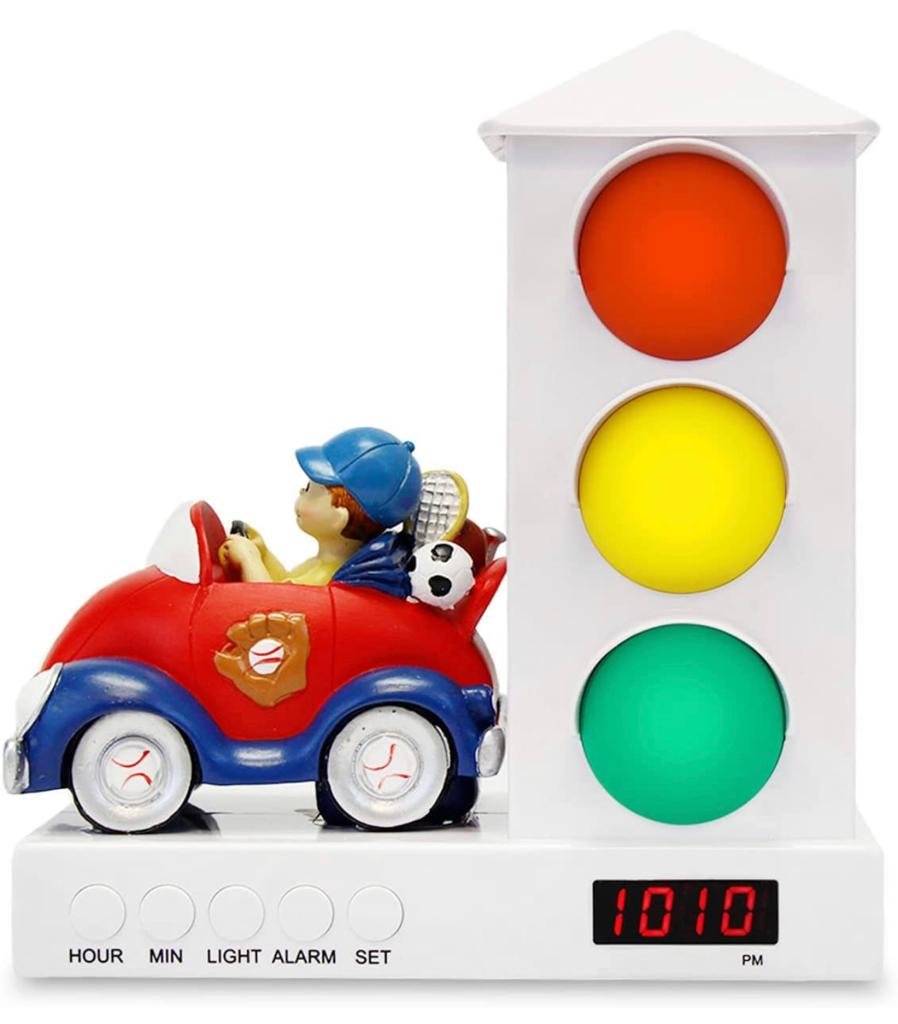OK-To-wake clocks
What time is it? Can I get out of bed? Is it still nighttime? Is it morning yet?
If you are reading this, then I’m sure those questions sound mighty familiar to you! Do you have a toddler or young child struggling with staying in bed? If so, an ok-to-wake clock will be a valuable addition to your nighttime routine.
Keep reading to learn more about the magic of the ok-to-wake clock.
What is an ok-to-wake clock?
The Ok-to-wake clock is a fun and effective tool to teach toddlers & children when it’s time to sleep and when it’s ok to wake up and come out of bed. The clock essentially serves as a visual tool to help children learn to stay in bed by identifying different colors on the clock. For example, on the stoplight clock, the red light (stop) represents that it’s time to sleep and stay in bed, and the green light (go) represents when it’s morning and ok to get up. Depending on which clock you use will determine what each color means for your toddler, as they each have different colors and set ups.
Who would benefit from the clock?
They are perfect for young toddlers, older toddlers and even older children who struggle with coming out of bed, whether at bedtime, in the middle of the night, or too early in the morning. Toddlers transitioning from the crib to a toddler or big kid bed will also benefit from the clock and even babies as young as 18 months who quickly learn to associate the colors on the clock with going to bed and waking up.
Here are ten tips to help you use the clock successfully:
Speak to your child about the clock.
Talk to your child about the clock and explain how it will work and why you are using one, what it is and what to expect from the time he goes to bed until morning. Explain the rules and boundaries surrounding bedtime and remind him every night or as needed what the clock represents.
Lots of praise, patience and practice as your child gets used to the clock.
Always look for ways to praise your child for staying in bed, following the rules, ‘listening’ to the clock and celebrating small progress on your sleep-training journey. Make a big deal when your child stays in bed until his designated wake time & throughout the night. This doesn’t mean you shouldn’t discipline when necessary, but always aim for more positive encouragement, you want bedtime to be a positive & pleasant experience.
Give your child responsibilities surrounding the clock.
Include him when purchasing a new clock, allowing him to choose a color he likes. Let him push the buttons to help set it up and nightly if your clock requires you to push a button to turn it on. Making him feel big and responsible will help encourage him to want to follow bedtime rules. Let your child be involved when purchasing a clock by giving her some choices and making conversation about it.
Always set it for a realistic time in the morning.
Setting your clock for a realistic time in the morning will help set your little one up for success, especially if you have very early risers. You don’t want your child waiting an endlessly and painfully long time in bed, possibly causing her to come out. To start, set it a bit earlier, depending on when she wakes up and slowly push that time up to a REALISTIC time, where your child isn’t waiting for hours in bed. Any time after 6:00 a.m. is considered morning.
Make the clock part of your bedtime routine.
Implementing the ok-to-wake clock into your nightly bedtime routine will help cue that it’s bedtime and it will also help your toddler know what’s happening next. Children thrive on consistency and routine and the clock is a great way to teach them what to expect.
Give your child a boost of confidence.
Remind and reassure your little one what a great bedtime rule follower he is and that you know how capable he is of staying in bed and waiting for his ‘ok light’ to turn on.
Never threaten to take the clock away.
You want bedtime to be a positive and pleasant experience, not a dreadful one filled with tears and power struggles. Never use the clock as a threat to take it away when they aren’t listening. There are other ways to use positive encouragement to teach and incentivize toddlers to stay in bed, like using a rewards chart, and other helpful ways to gain cooperation.
Give your child options surrounding the clock.
Giving your child options is a great way to give your child autonomy at bedtime. Let him make choices that make him feel big and responsible while contributing to the bedtime routine. For example, does he want to turn the red light on first, or read a bedtime book first. He gets to choose! Another great way to gain cooperation from children.
Find ways to connect.
Find ways to connect with your child at bedtime. Using the clock is a great way to make conversation, making it something that you both can participate in together. For example, play a game surrounding the clock, make up a secret about it that only you and your little one are in on.
Allow some time for your child to adjust to the clock.
Getting used to the rules of the clock can take a bit of time and you want your child to trust in the process! Be patient, give your child time to practice these new rules and master them. Be consistent with whatever approach you are using and you will both get there.

